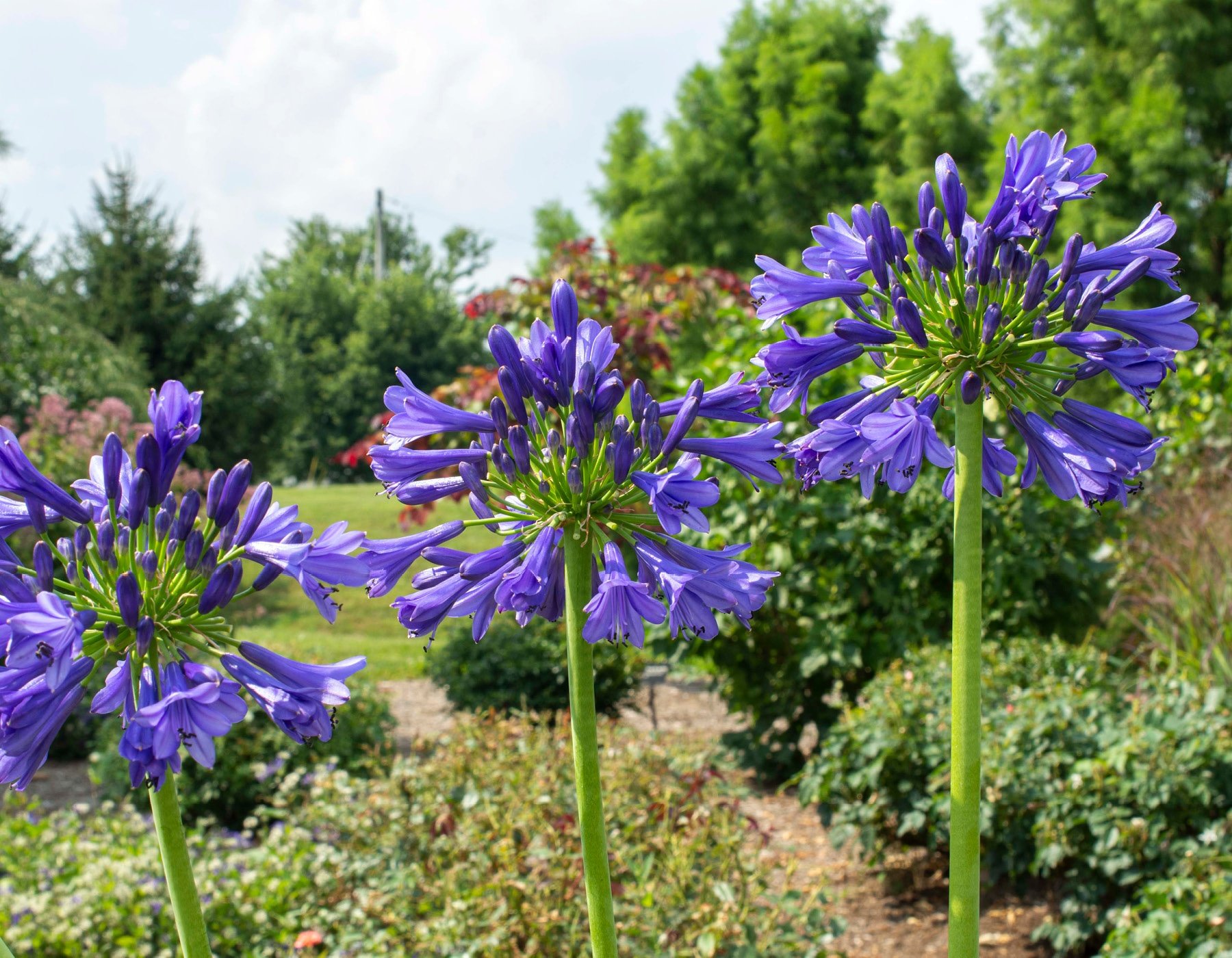Mastering the Art of Agapanthus Care: Vital Steps for Healthy Growth and Dynamic Blooms
In the realm of horticulture, the cultivation of agapanthus stands as a gratifying undertaking for those that seek to support these classy blooming plants. From choosing the right variety to grasping pruning techniques, the trip towards cultivating prospering agapanthus plants is diverse and holds the crucial to unlocking the full potential of these agricultural treasures.

Selecting the Right Agapanthus Selection

When choosing the appropriate Agapanthus variety for your garden, think about variables such as climate viability, bloom shade, and growth routine. Agapanthus, frequently called Lily of the Nile or African lily, is available in a range of shades ranging from shades of purple and blue to white. Choose a blossom color that matches your existing garden scheme to develop a harmonious landscape. In addition, consider the environment in your area to guarantee the Agapanthus variety you pick can grow in your details conditions. Some selections are much more tolerant of cold temperature levels, while others choose warmer climates. Understanding the growth habit of different Agapanthus selections is crucial for appropriate positioning within your yard. Some varieties have a clumping development routine, ideal for boundaries or containers, while others have an even more spreading nature, appropriate for ground cover or mass plantings. By meticulously evaluating these factors, you can pick the ideal Agapanthus range to enhance the elegance of your yard.
Perfect Planting Problems
Thinking about the ideal environmental demands is vital for successful Agapanthus cultivation. Agapanthus plants are delicate to cold temperatures and must be safeguarded from frost throughout winter months.
To make certain healthy growth and vibrant blooms, plant Agapanthus light bulbs at a deepness of concerning 2-4 inches and room them 8-12 inches apart. Mulching around the base of the plants aids preserve moisture and subdues weed growth.
Watering and Feeding Tips
Maintaining appropriate dampness degrees and offering vital nutrients are key elements in the care program for Agapanthus plants. When it concerns sprinkling Agapanthus, it is crucial to strike an equilibrium. If overwatered, these plants prefer consistently wet soil however are vulnerable to root rot. Throughout the growing season, water deeply once a week, making certain the dirt is well-draining to avoid waterlogging. In hotter environments or throughout durations of drought, more frequent watering might be required to maintain the soil equally wet. Nevertheless, lower watering in the winter months to avoid water logged conditions.
Fertilizing Agapanthus is important for promoting healthy and balanced development and prolific flowers. Use a balanced fertilizer, such as a 10-10-10 formula, in the very early spring as brand-new growth emerges. Repeat this application every 6-8 weeks throughout the growing season. Prevent excessive fertilization, as it can result in lavish vegetation at the cost of blooms. Always follow the manufacturer's directions for correct dilution and application approaches. By adhering to these watering and fertilizing ideas, you can guarantee your Agapanthus plants thrive and create vivid, resilient blossoms.
Trimming Methods for Agapanthus
Trimming Agapanthus plants at the appropriate times and with correct methods is essential for maintaining their health and wellness and advertising optimum growth and flowering. The ideal time to trim Agapanthus remains in late winter or early spring before brand-new development emerges. Beginning by getting rid of any type of yellowing or dead fallen leaves near the base of the plant. Cut them as short as possible without damaging the arising shoots.
For check this site out flowered stems, wait up until the flowers have actually withered and after that trim them back to the base. This not only cleans the plant's look however likewise motivates the growth of brand-new blossom buds. Deadheading spent flowers can likewise redirect the plant's energy right into generating more click to find out more blooms as opposed to setting seeds. Nevertheless, if you want to accumulate seeds for propagation, leave some blossoms to mature and dry on the plant.
Keep in mind to use tidy, sharp tools to make exact cuts and lower the risk of introducing conditions. Agapanthus. Regular trimming will aid maintain your Agapanthus looking neat and healthy while making sure a bountiful screen of attractive blossoms
Taking Care Of Common Insects and Diseases
After ensuring appropriate pruning methods for Agapanthus, it is crucial to address usual bugs and conditions that can affect the wellness and vigor of these plants. One typical bug that affects Agapanthus is the Agapanthus gall midge.
An additional usual problem is fungal leaf area, which presents as dark lesions on the leaves. To stop fungal diseases, ensure excellent air flow around the plants, stay clear of overhanging watering, and get rid of any type of infected fallen leaves without delay. Additionally, Agapanthus plants can struggle with root rot if they are grown in badly draining soil. To avoid this, plant Agapanthus in well-draining soil and stay clear of overwatering. By being cautious and taking prompt action versus illness and bugs, you can assist your Agapanthus plants flourish and create vibrant flowers.

Final Thought
In conclusion, grasping the art of agapanthus treatment includes choosing the right selection, supplying perfect growing conditions, appropriate watering and Extra resources fertilizing, suitable pruning techniques, and dealing with typical parasites and conditions. By adhering to these necessary steps, you can make certain healthy and balanced development and dynamic blossoms for your agapanthus plants. Bear in mind to on a regular basis check and keep your plants to promote their overall well-being and long life.
To make certain healthy development and dynamic blooms, plant Agapanthus bulbs at a deepness of about 2-4 inches and area them 8-12 inches apart. By following these watering and feeding tips, you can ensure your Agapanthus plants flourish and produce lively, long-lasting blooms.
One common parasite that affects Agapanthus is the Agapanthus gall midge. Furthermore, Agapanthus plants can suffer from origin rot if they are planted in poorly draining pipes dirt. By following these vital actions, you can ensure healthy growth and lively blooms for your agapanthus plants.